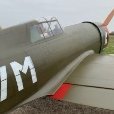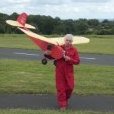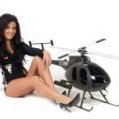All Activity
- Past hour
-

Warbirds Replicas Hawker Tempest V -Mass Build 2024(part two) .
leccyflyer replied to RICHARD WILLS's topic in Warbird kits
My FW190 is making slow progress - joined the wings today, but with so many other build threads I was leaving it a bit longer to document the build. It should be ready for the 80th Anniversary, so Pips Priller will be represented, if things go according to plan. -
Hello Mike I will try to outline the key costs, but bear in mind the choice of engine and radio gear has a huge impact. In my case the Saito FG90 is twice the cost of say a Zenoa 80gt twin. Plans, laser cut parts and additional wood for the Hellcat was about £500-£600. Retracts and wheels plus pneumatic components £700. Glue, paint, resin other parts £150. So realistically it’s around £1500 without the radio and engine. It’s likely to be a 20 month project so £75 a month for the airframe. I consider it great value as I enjoy all the hours of building. My previous build (Vailly 1/4.5 FW190) was cheaper as I bought plans, wood and retracts from someone who had decided not to build the model. Also my next build will be a 1/5 Bates Bearcat, for which I have bought everything needed at half price; again from someone who decided not to build it. So if you are put off by the cost but really want to have a go at a large model, there are some great bargains to look out for. Regards staying power: my advice is only ever build one model at a time and always finish it. I always have maintenance and repairs to carry out to keep my other models airworthy in any case and have a small workshop too.
-
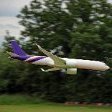
An RC Depron Douglas X3 Stiletto
Simon Chaddock replied to Simon Chaddock's topic in Own Design Project Blogs
Some progress. I managed a flight of 2:15 before its wayward habits caught me out and it landed a bit hard, again. The LW-PLA nose cone took some of the impact so the fuselage damage was not too severe. Aerodynamically it seems to suffer in two ways. At slow speed it is laterally unstable and rocks from side to side. The gyro keeps it manageable provided you speed up promptly. The white spots indicate just how far ahead the CofG is compared to the total wing area! However once at speed and it is surprisingly fast for a light weight foamy and getting to the point that elevator control becomes a bit marginal and slow to take effect. Not ideal when at speed and you are pointing towards the ground. I suspect this is in part due to the very forward CofG position required to tame the huge nose up pitch in low speed flight coupled with the flexibility of the thin and rather flexible Depron tail plane. The nose is under repair but it may require a new and stiffer tail plane and elevator to make the high speed flying more controllable Slowly getting there. -

Warbirds Replicas Hawker Tempest V -Mass Build 2024(part two) .
Eric Robson replied to RICHARD WILLS's topic in Warbird kits
All mine needs now is the stripes. -

Laser engines - the state of play following their closure
Ron Gray replied to Ron Gray's topic in IC Engines
Yes, fingers are well and truly crossed. It will be nice to re-acquaint myself with my 200, it's been 8 months since I last saw it! -
Discharge capability of a charger is often woefully poor as the rate depends on the ability to waste away the excess charge as heat so never seen anything more that about 1 amp discharge rate on any charger I've owned. Whilst on the subject of charging and discharging, (and I've not seen this mentioned before) but never leave batteries connected to chargers, some will trickle discharge your packs if left connected and not turned on, long term that means dead batteries!
-

Forum members' new models: Let's see them.
Eric Robson replied to Paul Marsh's topic in All Things Model Flying
Keep away from there Peter, thats the final countdown. -
Brushless motor replacement help please!
Allan Bennett replied to SIMON CRAGG's topic in All Things Model Flying
It says 'recommended' 2S or 3S. Generally speaking it's not volts (cell-count) that kills motors, but amps. Provided you keep the amps within the recommended limit by choosing an appropriate prop size the motor will be okay. To make the right decision we also need to know the dead motor's watts rating, or what measured watts you were actually achieving with it. If you have no data, then what size ESC was it using? -

Forum members' new models: Let's see them.
leccyflyer replied to Paul Marsh's topic in All Things Model Flying
It's the youth in Asia that's making all the ARTFs though, isn't it? -
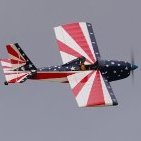
Forum members' new models: Let's see them.
Peter Miller replied to Paul Marsh's topic in All Things Model Flying
As I keep telling people "There is nothing wrong with me that euthanasia wouldn't cure!" - Today
-
Still plodding along whenever I can, not too much of a problem with the weather as it is😒 made the prop driver ,took two attempts in order to get the look/fit that I wanted and did a bit more to the second set of castings
-
I'm glad to hear it but then I'm an engine man and appreciate the challenge of setting up a well-tuned engine. I understand why novices prefer electric motors because they are eminently reliable, smooth, quiet and clean. For those of us who don't mind getting outr hands dirty, i/c engines are our preferred power source if only because on a pretty standard tank you can fly for twenty minutes if yiou want to, ideal for training beginners. That said, beginners get tired quickly having to concentrate for long periods. Us Greybeards had to get to grips with i/c engines in the old days because electric propulsion was in its infancy. I/c engines are not difficult to master. On a two stroke glow, there are only two needles to adjust. I look forward to hearing of your experience of learning to use i/c engines, meanwhile, keep up with learning to fly on electric models.
-
I had this problem when I took a FlySky FS-i6 to our club for the first time and wasn't allowed to fly. The site rep was adamant that I would need to do a range check, so on the next visit we did a full range check, before other flying started. This was my report to the committee following the test: "...we conducted a full-power range check of my FlySky transmitter & receiver. This demonstrated the range at approx 6ft off the ground to be as shown in the photo below. The distance quoted is by scaling from Google Maps, so should not be considered especially accurate. Transmitter: Flysky FS-i6 2.4GHz Transmitter Battery Voltage: 6V Receiver: Flysky FS-R6B Receiver Battery Voltage: 6V Transmission Protocol: AFDHS (Automatic Frequency Hopping Digital System) This is FlySky's original protocol, not the later AFDHS2A Weather Conditions: Dry Grass Length: 300 to 400mm (12" to 16") Test Result With the transmitter and receiver located in the positions pictured below, the model functioned normally with the transmitter at head height, however the signal was intermittent with the transmitter held at waist height. Given the grass length and its moisture content, this may have attenuated the signal. The model was supported off the ground for the tests. The test was repeated with the receiver aerial side on and end on. Controls (Ailerons, Elevator, Throttle & Rudder) were tested individually, then all together. Conclusion: The test was considered a pass.
-
These batteries don't half take some time to discharge. nevermind ..... I am getting there. I have a further 24 to get through which I will start on tomorrow night. I'm waiting for 5 to finally complete as I have a good old chat with my mate John Smith. I'll be glad to get this out of the way and get myself in a position where I can start managing these a bit better. ..... Note I never said correctly ...... as there will no doubt be many opinions as to that ...... 🤣 I am starting to feel happier from a safety and battery life point of view ........ I had to start somewhere. toto
-
Who is legally responsible in a model flying club ?
Martin Harris - Moderator replied to Rocker's topic in Incident Reports
Several posts received stating a very different position but this forum is not the place for individual club politics or disagreements. Happily, the club concerned has not been identified so there’s no need to edit the thread but as there have been no other replies for over 3 weeks and to prevent this thread escalating, it’s now locked. -
Warbirds Replicas Hawker Tempest V -Mass Build 2024(part two) .
Flyer replied to RICHARD WILLS's topic in Warbird kits
I'm just over the hill................ -

Warbirds Replicas Hawker Tempest V -Mass Build 2024(part two) .
Chris Walby replied to RICHARD WILLS's topic in Warbird kits
Better stop flying the Butcher Bird and finish that, then get ready for the Tempest! I should at least be able to get the invasion stripes scale! Well done Richard and the team...talking of the team... has the green one got another ASBO or is he on another "special mission" again? -
Bye laws ? Local council offices, enterwrb, public library ? Is it national trust site ? Maybe RC gliders in winter, manned ( or womanned) flight in summer... Bmfa would have details I would of thought, or paragliders national body/clubs ? Hate to say this but para porkies?? I don't think for one minute it's pars porkies, buy you never know......very naughty if it is....
-
I have a bit of everything from battery pouches to ammo boxes but they are very restrictive in terms of the length of leads on the batteries for reaching the charger terminals. so for now ..... I have a good pair of trainers that will see me out of the shed quick enough if it all goes belly up . 😄 hope it never happens though. I will look into a better set up. My mind is on a new purpose built shed which I would build a more purpose ready space for battery charging etc , but that's further down the line for now. toto
-
You certainly have gone industrial scale.😮 I've been electric flying for coming up to thirty years. but personally I wouldn't be comfortable charging or discharging that number of large batteries simultaneously, ion the bench, in the workshop and with no containment of any sort. Well worth looking at Bat Safes, cinder block bunkers or ammo boxes for charging, discharging and storage.


